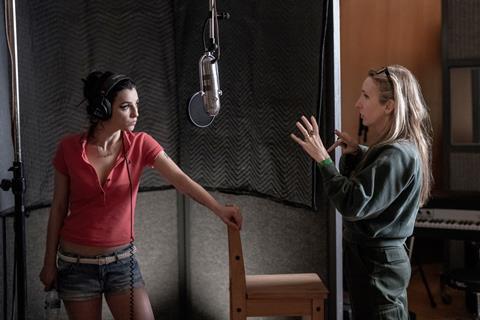
When Sam Taylor-Johnson cast Industry star Marisa Abela in her first leading film role as real-life singer Amy Winehouse in Back To Black, the news resonated beyond the film industry. There would be no room to hide for the actress who took on the role of Winehouse, who died in 2011 aged just 27. Many people still have intense feelings about how Winehouse’s life and death played out, and the latter years of her life were documented in minute detail by a rapacious, unrelenting press pack.
Produced by Alison Owen and Debra Hayward’s Monumental Pictures, Back To Black reteams Taylor-Johnson with her Nowhere Boy writer Matt Greenhalgh — and offers a portrait of Winehouse’s life-changing love affair with Blake Fielder-Civil (played by Jack O’Connell) that became the fire in which her seminal Back To Black album was forged. The film was released by Studiocanal in the UK in April, grossing $15.7m (£12.3m) to become the second-highest grossing UK independent film of the year, after Paddington In Peru. Worldwide box office is $51m.
Taylor-Johnson and Abela came together to talk to Screen International about crafting their vision for the film, the challenges of depicting Winehouse from the age of 17 to 27 and how they prepared themselves for the audience reaction.
“I am excited about talking about it again,” says Taylor-Johnson. “It’s been a minute, and now it’s lived its life and it’s in the world.”
Screen International: Sam, how did Alison Owen pitch the film to you?
Sam Taylor-Johnson: Alison came to me with a very different script which I felt was a generic overview of [Amy’s] life. I said, “I want to start from scratch with a perspective which is [Amy’s], and try to tell her story through her lyrics and her words.”
I worked with writer Matt Greenhalgh and we picked apart everything Amy had said, from interviews to song lyrics to things she’d written in her diaries, to try to use her voice to tell her story. Matt sat down to write in November, and in February delivered our first draft. And the first draft is what you see. We shot every word of this first draft.
Marisa, what convinced you to audition for the part?
Marisa Abela: When I first heard about the role, it seemed like a daunting task to take on the lifeblood of a person that really existed, especially in the public eye, and especially someone like Amy. She is iconic and distinctive but also complex. And she seemed very far away from me. I wanted to do some due diligence into whether there was anything I could bring to this project that someone else wouldn’t be able to bring, and what my way into Amy would be.
I started looking at source material and at videos of her online. I watched [Asif Kapadia’s] documentary again, and listened to her music. The more I watched, the more I felt this was a story that I could tell, and this was a woman I could get in the shoes of. I was struck by her vulnerability and what was going on behind her eyes in clips and in performances. I started to feel there was a story that hadn’t necessarily been told before.
What do both of you recall about audition day?
Taylor-Johnson: Marisa came in as herself, whereas the others all came with something signifying Amy, big earrings, make-up, the outfit. Nina [Gold, casting director] and I had brought it down to seven or eight women. Marisa was the first person that came through the door.
It was the moment she looked through the lens of the camera without even saying anything, that I knew she was going to be playing Amy. The transition from looking down, taking a breath, and looking up and looking through the lens and through to me, was such a radical shift, almost like a sort of DNA shift. It’s an internal shift that has to happen, not just an impersonation. I knew if she could wordlessly convince me, that I had something to work with.
What do you remember, Marisa?
Abela: I actually had a sense of calm. Not in the sense of, “Oh, I’ve got this in the bag,” but more I didn’t feel like I had anything to prove. My version of this was either going to be what Sam wanted… or it wasn’t. And my version was this kind of internal shift. I was trying to convey what it was I think Amy was trying to convey to the world.
Amy was always pushing for something, whether it was to be taken seriously as an artist, to be loved by Blake, to be loved by her father. The wanting was always the most tangible thing for me to hang on to. Which is lucky, because there are these other huge signifiers of her: her voice, her accent, her hair, her mannerisms. But my kind of ice-pick onto her was her longing.
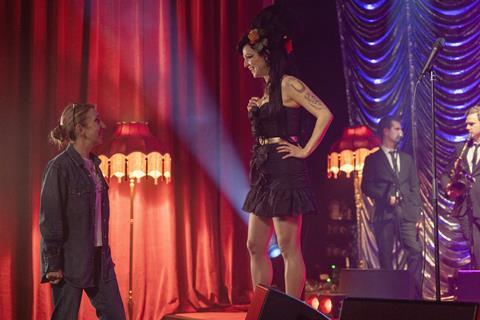
How did you work together on the next stage?
Taylor-Johnson: The way I tend to work with actors is working alongside how they want to create their character, and to support them along that journey.
There were many conversations around the singing aspect of it. It was not necessarily the aim for Marisa to sing the entire movie. There were options and through the process of Marisa working with Anne-Marie Speed, the vocal coach, that was one of the most extraordinary possibilities. But the more Marisa went 100% into every aspect of working on her character, the voice, the singing and the movement, [there came] this moment where Marisa sat down to sing one of the songs acoustically and I thought there was a glimmer of, “Oh my goodness, this could be possible.”
Marisa, did you think of yourself as a singer?
Abela: Not at all. I still don’t. But once you get a job like this, there’s a real responsibility to put everything you have into it. There was movement training, and a physical transformation and accent training as well as singing. It happened one step at a time and things clicked into place at different times. And the singing was just one of those things. I was so dedicated to feeling like a person that could sing live on set. That was the most important thing, not that those live vocals needed to end up in the movie, but I needed to be able to sing on set. Whatever they wanted to do with the vocals in the edit was none of my business. It was useful for me to not think about the final product in the same way I wasn’t going to be doing my own hair and make-up. It was more about getting as close to Amy as possible. And Amy was a singer.
It feels incredible to be able to express yourself through a song, and especially through a song that, in an imagined sense, you’ve written yourself. It brings you closer to my understanding of Amy’s relationship to Blake. If I can sing ‘Love Is A Losing Game’ and put breath to words on a page, it makes you feel something.
Marisa, what were the challenges of playing a character through a span of 10 years, from the age of 17 to 27?
Abela: For me, you’ve got two things at the same time. There are images out there of what Amy looked like at 17 and at 27. People have an intense memory, both emotional memory and real memory of that time she sang on live television for the first time, so it needs to look recognisable as Amy. But also you are changing over a person’s life of 10 years, and as a person that suffers with an eating disorder and addiction. There are so many things at play that need to make sense. I worked with my movement teacher, Sara Green, for four hours a day, four days a week, to map out that physical transformation.
And at the same time, I was undergoing a physical transformation of my own with food and exercise. I lost a lot of weight for when we started filming at the end of Amy’s life and at the end of our movie, and went backwards so that during filming I would put on weight and be healthy and full of energy for that time.
For three months leading up to the movie I was losing weight while also mapping out that physical journey in more of a technical sense. Amy has a different physicality at the beginning of the film than she does at the end. She was physically bigger in every way at 17. She was making bolder physical choices. One thing remains the same in that she wears her feelings on her face and in her body at all times. But the way she presents those feelings are different.
Sam, what were the biggest challenges of directing backwards in time?
Taylor-Johnson: The process was a very intricate one in the sense that we had to shoot scenes in which Amy was very broken and very fragile and vulnerable. Having spoken to numerous people about how to achieve that, we realised to shoot the film almost back to front was the path forward. It meant Marisa had to go through a physical transformation that was safest if we gave it time, and she went on that journey with nutritional help. To film it chronologically would have meant she would have had to have very quickly and unhealthily got to that place.
If you shoot chronologically, and you go through the process, there’s a language which you set up through the journey of it. To go back to front, you’re starting at the worst crisis point and then sort of healing backwards. The important thing for me throughout the entire process was to have Marisa and Jack be able to give the sense of such a powerful, undeniable love, which is what you get from the album Back To Black. Our judgments and feelings around that relationship had to go to one side, and you had to feel the palpable connection. The story to be told was to look at it again from her perspective, from the inside, to feel that intense love story.
People have such passionate feelings about Amy. What conversations did you have to anticipate strong reactions, and especially to protect Marisa given it is her first major screen role?
Taylor-Johnson: Marisa and I had a conversation on day two of shooting, where I said, “Turn everything off, don’t read anything.” The problem is everybody, especially around Amy, has an emotional perspective that is very personal. The journey that I felt was the purest telling of her story was her words, her perspective.
It felt so important to give her a bit of agency back, and to come from the inside, with the guidance of her lyrics. If that was our North Star, then that was the purest way of telling her story. Whenever something was questionable in my mind, I’d just go back and read her lyrics or I’d read things that she’d written and then know I was on the right path.
Irrespective of what we think of her relationship with Blake or her father, her perspective was always coming from the place of love. Their faults are seen by us as an audience but not through her eyes. Through her eyes it was love, love, love.
How have you found the reaction?
Taylor-Johnson: I never read anything. And I say that with absolute honesty, I absolutely never read anything because I feel like that’s where madness lies. The important thing for me is not other people’s reactions. This was my perspective of the best way to tell her story. You’re always going to get reactions about someone who is so dearly loved and the best I could do was to give her voice back to her. That’s what I felt I did.
Marisa, how open have you been to the reaction?
Abela: I’m more open to it in the sense it was such an important job to me. It’s difficult as an actor to not feel [the reaction], whatever it is, just take it on. I wanted to share this story with the people who wanted to receive it. And to be honest, my experience is mostly face-to-face experience, just because I think you’re nuts in this industry if you’re, like, scrolling. And there’s so much, you could be there for hours. So my experience is mostly with people that talk to me about it on the street or at work and that experience, thankfully, is positive.
I think some people would have loved to have seen Blake or Mitch vilified and crucified for what happened. The truth is, if we’re going to tell a story from Amy’s perspective, there’s just nothing in her lyrics, her diary entries, the videos that we can see of her, that say she would have wanted this to have been a movie filled with hate. The sad thing about Amy is that she saved all of that bitterness and that loathing for herself. The only thing she was at war with was herself. She had nothing but a boundless love to give to the people she chose to give it to in her life.
What will stay with you the most about making the film?
Taylor-Johnson: It was the most positive, extraordinary experience making this movie. The whole journey was very serendipitous. Some movies are like pushing a rock uphill through treacle. This one felt like I was keeping up to a high-speed train. It just felt it had a momentum that was so positive and exciting and the feeling of being on set with her music, and the energy around her and her life.
There was also an excitement of telling her story and filming in London. We did 56 locations in 45 days, so we moved at the speed of light. It was just an exciting process. We filmed in the venues where she went. Two of the main pubs, The Good Mixer and The Dublin Castle, haven’t been touched. They’re still exactly as they were when she was in there. Being able to go back in there and recreate some of those performances felt like a privilege.
Abela: I have a deep emotional relationship to the movie and to Amy and it’s quite an overwhelming feeling. But the thing that will stay with me as an actor is that there’s an immense amount of bravery that goes into telling a story like this, from all of us; from Sam, from myself and the rest of the cast, and the crew. And acknowledging I had that bravery. I went out there and sang live on a stage in front of however many extras when I am not a singer, I just did it because I was invested in telling this story.
I put everything into becoming a different person. It’s always what acting is, but it isn’t always this transformation. There is more of yourself in something. The intensity of that will stay with me as an artist. I think I’d be less likely now to turn around to a role and be like, “There’s no way.”



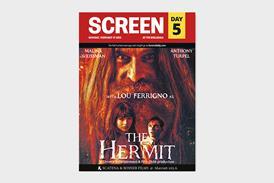


![The Brightest SunScreen[Courtesy HKIFF]](https://d1nslcd7m2225b.cloudfront.net/Pictures/274x183/3/5/0/1448350_thebrightestsunscreencourtesyhkiff_312678.jpg)
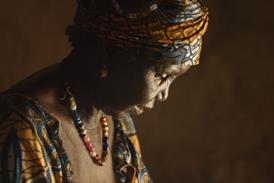
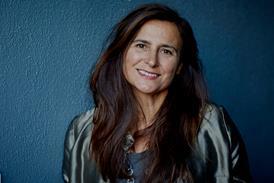



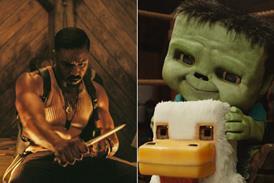
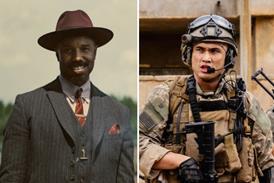
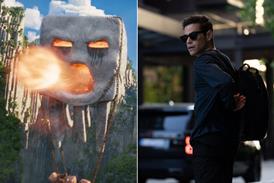
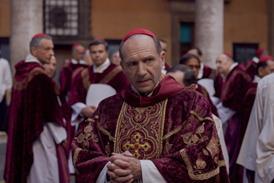
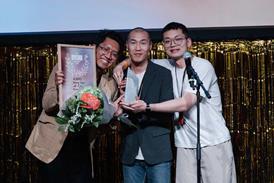
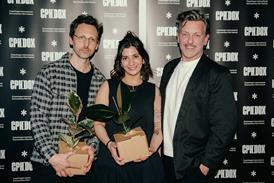







No comments yet